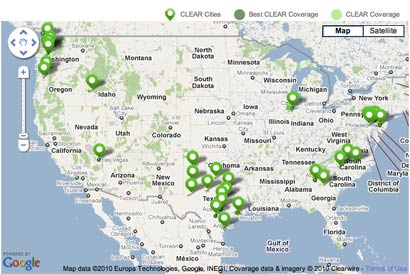« Intel vPro technology—what is it all about? | Main | Handheld Group Business Partner Conference 2010, Stockholm »
May 28, 2010
4G
Pretty soon everyone will be talking about 4G. Who has 4G and whose 4G is better or faster. Somehow, marketing from all wireless camps has latched onto the cool-sounding terms 3G and 4G, though they're avoiding "3.5G" or "3.75G" you often find in tech specs. That's probably because three and a half sounds like not quite four.
Anyway, Sprint is now making noises about 4G and you can actually buy 4G smartphones using the Sprint network. Since Sprint is a bit in the ropes, being first may not mean all that much, but it's still good to know how things developed and where they are headed.
A couple of years ago, a product manager from one of the rugged computing manufacturers asked me what I thought of WiMAX. At the time WiMAX was a buzzword for really fast next generation wireless. I told him it was probably too early to worry about it and it wasn't clear what would happen. This is still true in 2010, but WiMAX is now available as "Sprint 4G" though technically it's the same network as the CLEAR brand name 4G network from a company named Clearwire.
Who's behind Clearwire? None other than Craig McCaw, the trailblazer who once compiled McCaw Cellular and then sold it to AT&T in the early 1990s. Where does Sprint fit in? Well, McCaw and Sprint both owned spectrum in the 2.5GHz (in fact, they own almost all of it) and decided to pool resources, with Sprint making additional investments until they were the majority stockholder of Clearwire.
Does this mean it'll be clear sailing for Clearwire/Sprint in the emerging 4G arena? Not really. Problem is, this time both AT&T and Verizon are backing an alternate 4G technology called LTE, which stands for Long Term Evolution (how do they come up with these terms?!). LTE uses the 700MHz band and physics dictate that waves in that spectrum can go farther at lower power levels and also have less trouble being received in buildings. This potentially means that LTE, in addition to being backed by the two largest wireless providers, also costs less to deploy.
For now, Spring and Clearwire claim that their 4G WiMAX network allows mobile download speeds of 3 to 6 mpbs with speed bursts over 10 mbps, and upload up to 1 mbps. Sprint and Clearwire sell both 3G/4G Mobile Hotspots (made by Sierra Wireless) and 3G/4G USB modems that look like standard USB memory keys. Clearwire offers unlimited usage for US$40/month plus a small lease fee for the modem (you can also buy it). That sounds like a good deal, but for now the map for that is quite limited.

More speed is exciting, but at least based on my various devices that use 3G, I'd be thrilled to have reliable 3G coverage wherever I go before I jump to 4G.
Posted by conradb212 at May 28, 2010 3:57 PM
















